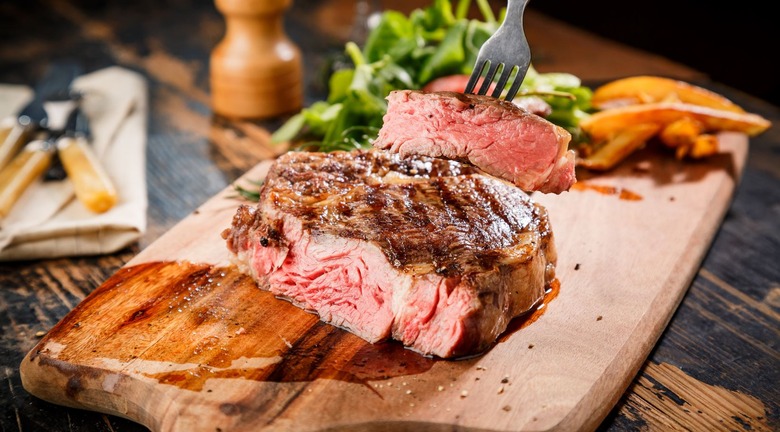'Meat Glue' Exists — And You've Probably Eaten It
The food science world is a crazy place. As anyone who's ever watched Good Eats can tell you, even the most basic food-related chemistry, like boiling water and solidifying Jell-O, relies on complex and occasionally pretty complicated scientific processes. So it shouldn't come as too much of a surprise that there's something called "meat glue" out there — and it's just what it sounds like.
Officially called transglutaminase, meat glue is an enzyme that, when applied to meat as either a powder or slurry, tightly bonds proteins together (technically, it catalyzes the formation of covalent bonds between the amino acids Lysine and Glutamine). It's sold in the U.S. by a Japanese company called Ajinomoto, which also produces most of the world's MSG.
The possibilities for using meat glue are infinite. It can be used to bind whole pieces of meat to one another, or it can be added to ground meat to create sausages that don't need a casing. Chef Wylie Dufresne (of New York City's now-closed WD-50) used to combine it with shrimp in a blender to create what he called "shrimp spaghetti." It can be used to attach chicken skin to a piece of fish, or to create any kind of Frankenmeat, really.
But even though the idea of receiving a chicken-duck-beef thing at a fancy restaurant might be intriguing, there aren't many restaurants that are using it (and you're probably not going to find glued-together meat in the supermarket). Instead, it's most often used by the foodservice industry as a way to pass off cheat cuts as expensive ones; for example, that "filet mignon" served at that low-rent banquet hall might just be three or four cheaper strips of beef that have been glued together.
Aside from the Frankenfood aspect, the use of transglutaminase isn't too crazy, but there is one moderately concerning aspect to it: foodborne illness. The inside of a piece of meat is essentially sterile, which is why we can eat a medium-rare steak and not get sick; as long as the outside of the steak (where pathogens live) is cooked, you're fine. But what happens when three thin strips of beef are glued together, and then cooked medium rare? What was once the outside of the steak is now on the inside, which can be a recipe for disaster.
So you probably don't need to worry that all the meat you're eating is just cobbled together from bits of different animals, but if you find yourself being served a filet mignon at a dodgy banquet hall, you might want to make sure it's cooked to well-done.
